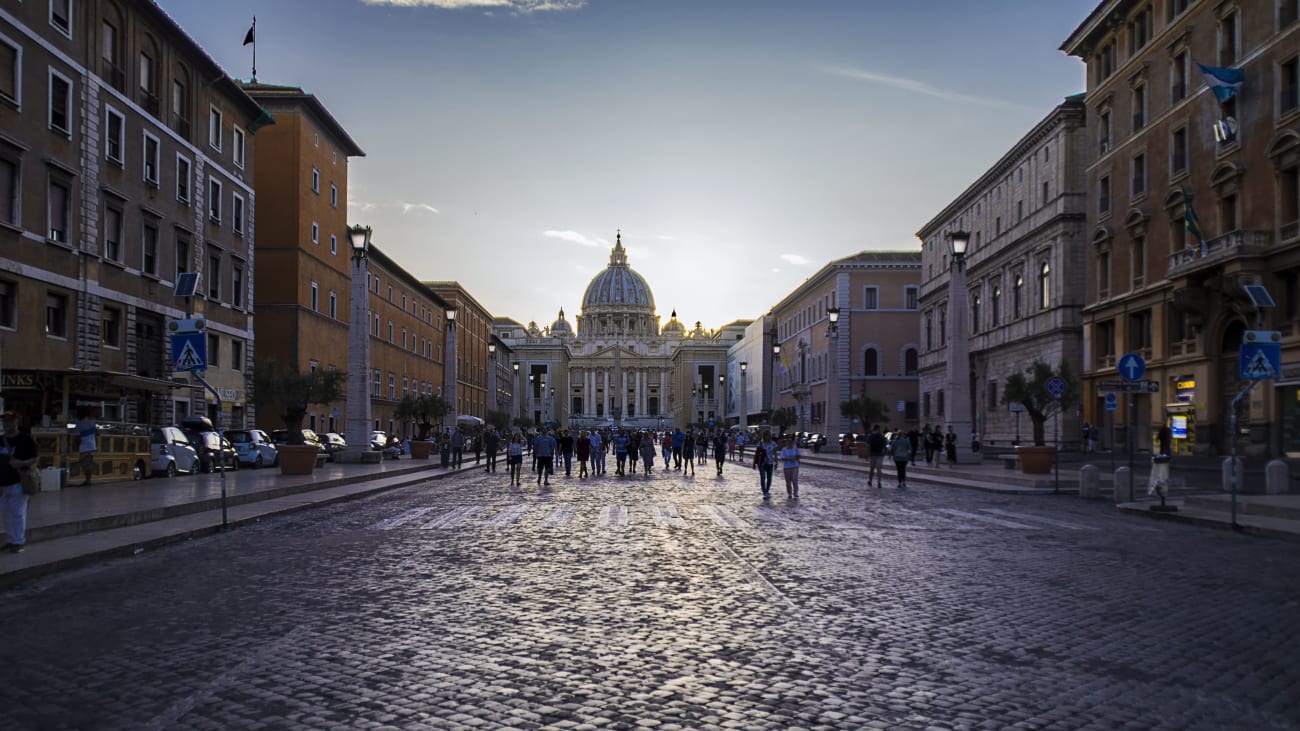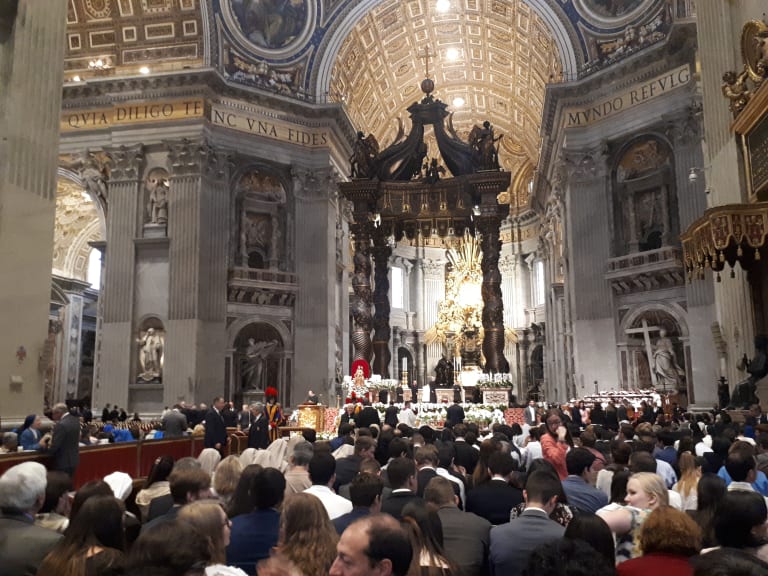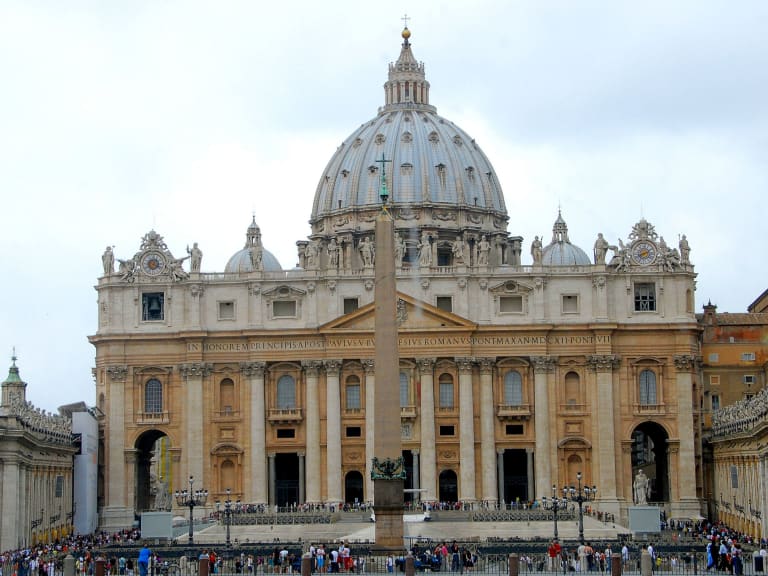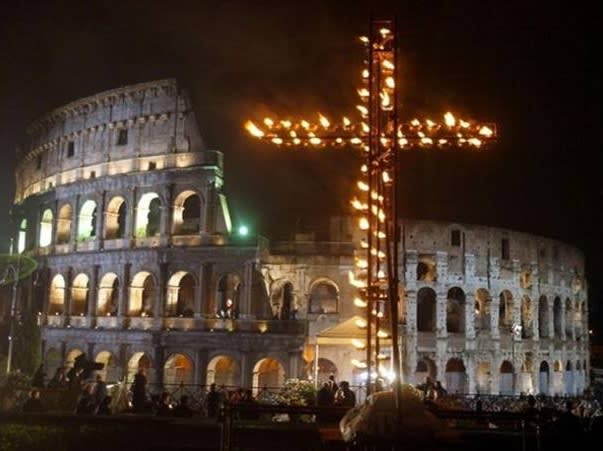Holy Week at Rome
Whether you are a religious person or not, Holy Week in Rome is an excellent opportunity to get to know its spiritual side. Find out how to make the most of this experience.

Vatican City, Rome | ©Juan Carlos Benito
Traveling to Rome during Holy Week is one of the best times to visit the Italian capital. The spring weather is more pleasant for spending time outdoors, vacations are longer and the city is transformed bringing out its most spiritual side.
Seeing in person the Holy Week in Rome is, without a doubt, one of the experiences you must live during your trip to Rome. Do you like the idea? In this post I tell you how these festivities are in the capital of Italy and how you can enjoy this special event in the city. Let's get started!
How to get tickets to enjoy Holy Week in Rome?

Attendance to the religious events of Holy Week in Rome is free but you will need to get a ticket well in advance, as the demand is very high and the number of places is limited.
To obtain a ticket you will need to contact the Prefecture of the Pontifical Household by fax expressing your interest in attending one of the religious events of Holy Week in Rome and indicating the following information:
- Date of the General Audience or Liturgical Celebration
- Number of tickets requested
- Name / Group
- E-mail address
- Mailing address
- Telephone and Fax
Once they receive your request, the Vatican will inform you by mail to your home address and will send you a notification with the information of the place you can approach when you arrive in Rome to find out if you have finally been granted the tickets or unfortunately there is no availability given the large number of requests to attend the religious celebrations.
My advice is to try to make this request as far in advance as possible (between 6 and 3 months before your trip to Rome) and ask for few tickets, since combining these two factors you will have a better chance of achieving your goal.
What if I don't get tickets for Holy Week in Rome, what can I do?

Don't worry! In case you don't get tickets for the Vatican's religious events, you can always experience the spirituality of Rome's Holy Week by making other interesting religious-themed plans in the city. Check out these ideas!
- Semi-private Holy Week Tour in Rome: This is a guided historical-religious tour focusing on the Passion of Christ where you will also see some of Rome's most beautiful churches, basilicas and cathedrals as well as some holy relics related to Holy Week.
- Tour of Rome's churches: This is a short walking tour of some of Rome's most beautiful churches. An excellent opportunity to get to know the sacred art of the Eternal City including a stop for a coffee in a typical place of Rome.
- Private tour of Catholic Rome: This is a private tour with driver through the churches and basilicas of Rome that you can tailor according to your tastes and preferences.
How can I see the Pope up close during Holy Week?

The best way is to get some free tickets to attend the religious celebrations of Holy Week but if this is not possible because there are no more seats available, don't worry because you have more opportunities.
In general, most tourists and pilgrims visiting the Vatican have two options to see the Pope in person: the Wednesday Papal Audiences (for which tickets are also required) and the Sunday Angelus (for which you don't need a ticket, just go to St. Peter's Square at noon).
In the post Papal Audience in Rome I tell you all about this experience, which you cannot miss during your visit to Rome whether you are a religious person or not.
What is Holy Week in Rome like?

In countries with a Catholic culture, Easter is celebrated with great devotion, but each one does it in a different way, following their own customs and traditions. But how is Holy Week celebrated in Rome? We will see it in detail below.
It begins with Palm Sunday
In Rome the celebrations for Holy Week begin on the last Sunday of Lent with the celebration of Palm Sunday, which marks the beginning of Holy Week.
On this day, a mass officiated by the Pope takes place in St. Peter's Square at the Vatican to commemorate the triumphal entry of Christ into Jerusalem and in his memory the olive branches carried by the faithful gathered there are blessed.
On Palm Sunday the religious act concludes with the Angelus at 12 PM with the Pope from the window of his study in the Vatican Apostolic Palace.
Admission to this event is free but it is necessary to reserve in advance. This is a crowded event so there will be standing room only to listen to the mass.
Holy Thursday, a day to commemorate the "Last Supper"
From Holy Thursday onwards, the most important religious acts of Holy Week begin.
On this day, the Pope again officiates another mass to commemorate the "Last Supper" of Christ before his Passion and in which he established the sacrament of the "Eucharist", in order to remember his sacrifice on the cross for the salvation of souls in the centuries to come.
The Mass concludes with the washing of the feet performed by the Pope to a group of priests, recalling the moment when Christ washed the feet of his Apostles as a symbol of humility and example of service to others.
This religious act normally takes place in the church of St. John Lateran, the first church built in Rome by order of Emperor Constantine the Great in the fourth century AD and one of the most beautiful in the city.
From the portico of the main façade of St. John Lateran, the Pope gives his blessing every Holy Thursday and bids farewell to the faithful gathered there.
Participate in the beautiful Stations of the Cross on Good Friday

On Good Friday the Passion of Christ is celebrated, so no masses are celebrated in the Catholic temples, but on Friday afternoon (the moment in which the death of Christ on the cross is placed) the liturgy of the Passion of the Lord takes place and at dusk the most moving religious act of Holy Week in Rome takes place: the Via Crucis that goes from inside the Colosseum to the temple of Venus, on the hills of the Palatine.
The Pope leads this solemn procession accompanied by other priests and hundreds of faithful who walk the streets of Rome in memory of the Lord's Calvary to Mount Golgotha where he was crucified. In each of the stations that make up the Stations of the Cross, different passages of the Gospel are read, inviting reflection and recollection.
The Stations of the Cross on Good Friday is one of the most exciting moments of Holy Week in Rome because of its profound religious significance but also because of the beautiful scenery of ancient monuments and ruins that are illuminated by the light of the torches carried by the faithful as they pass by.
Holy Saturday: a day of silence, meditation and recollection
On Holy Saturday during the day, the churches of Rome do not celebrate masses because they are in mourning. It is a time for recollection, meditation and the commemoration of the Solitude of the Virgin Mary, the mother of Christ.
Everything changes after midnight, when the Vigil Mass is celebrated in St. Peter's Square. In this religious act a fire is lit in the atrium which, after being blessed, is used to light a large paschal candle representing the Risen Christ. In turn, its flame is used to light all the candles that will illuminate the church as a symbol of hope and joy.
Big party on Easter Sunday in Rome!
Also known as Easter Sunday, this is the central feast of Christianity where the resurrection of Christ is commemorated.
The city is overflowing with joy on Easter Sunday! On this day, early in the morning, the Pope officiates the Holy Mass from St. Peter's Square where the Easter Eucharist is celebrated. In addition, a Paschal candle representing the light of the risen Christ is lit and remains lit throughout the day.
To conclude the event, the Pope imparts the papal blessing known as Urbi et Orbi from the balcony of St. Peter's Basilica to Rome and the whole world. The same blessing the Pope gives on Christmas Day.
Discover the Vatican, the epicenter of Holy Week in Rome

In addition to its religious importance as the seat of the Catholic Church, the Vatican has much to offer from a historical and artistic point of view making it one of the most important and interesting tourist attractions in Rome to visit.
What can you see in the Vatican?
- St. Peter's Square and Basilica
- The Apostolic Palace
- The Sistine Chapel
- Michelangelo's "Pieta"
- Bernini's "Baldachin and Colonnade"
- The Vatican Museums
- The Vatican Gardens
And much more!
So that you know everything you can do and see in the Vatican, before traveling to Rome I recommend you to read this post with everything that the Vatican City can offer you on your visit to the "Eternal City". Then you can decide if you want to discover it on your own or with a guided tour.
There are so many fascinating things to see that you'll be left speechless - you'll want to come back!
